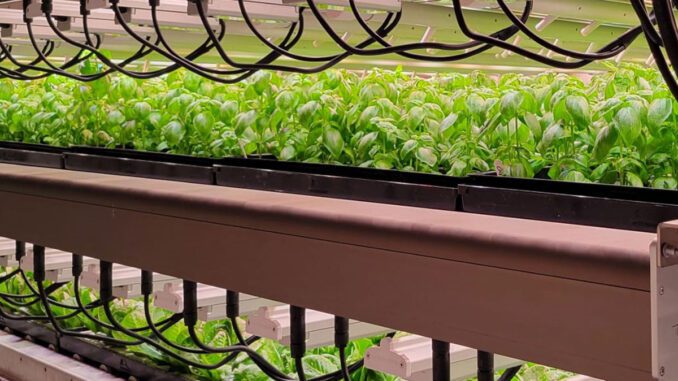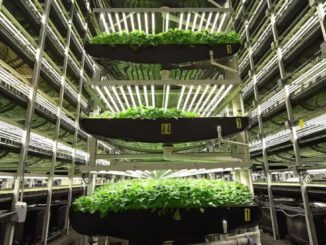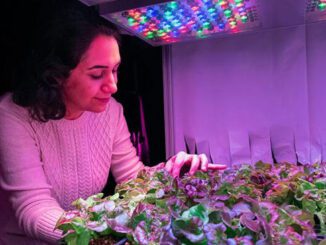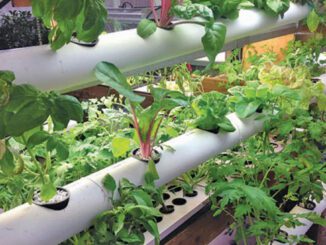
As Ontario Farmland Disappears, Vertical Farm Industry Grows
Growing plants indoors in stacks shape of things to come, agritech experts say.
Vertical Farming Growing | Jack Rogers |
Image: Vision Greens
According to data from Canada’s 2021 Census of Agriculture, Ontario is losing 319 acres of farmland daily.
This number is likely to increase after a housing law passed earlier this month by the provincial government expands development into parts of Ontario’s protected Greenbelt.
A startup based in Welland, Ontario with ambitions to expand across the country says it has a solution that will produce food on less land. It’s a solution poised to be a burgeoning growth sector in agriculture as the impact of climate change and development reduce the amount of arable land: vertical farming.
In a two-story building in Welland, about 20 miles southwest of Niagara Falls, a vertical farming growing facility known as Vision Greens is growing tons of plants 365 days a year indoors in stacked formations in a controlled environment.
The produce—think floor-to-ceiling rows of lettuce, arugula and basil—serves a market with a radius of less than 125 miles (200 kilometers), guaranteeing delivery within 24 hours of harvest.
According to a report in CBC, the Vision Greens facility is equipped to grow 700,000 pounds of food a year. Lenny Louis, the company’s CEO, told CBC that the vertical farming facility is “using five percent of the land of traditional farming.”
Shane Jones, an agritech expert with The Barrett Centre of Innovation in Sustainable Urban Agriculture at Durham College in Whitby, told CBC that vertical farmers are able to take a small footprint of space and make it more productive than a single layer of farmland.
By adjusting the controlled environment at a vertical farming facility, vertical farmers give crops “the exact sunlight recipe, the exact nutrients and bring up the carbon dioxide to the point where plants can be super-efficient,” Jones said, adding that vertical farmers are able to tweak their recipes to maximize the grow potential of each type of plant they grow.
The Ontario Federation of Agriculture, which is lobbying for more protection of farmland, holds an opposing position that vertical farming can’t replace the output or environmental benefits of conventional farming.
The Federation’s farmland protection efforts suffered a setback when the new housing law passed by Premier Doug Ford’s Progressive Conservative government—designed to build 1.5M new homes in 10 years—opened up part of Ontario’s protected Greenbelt environmental protection zone to development.
The new law also allows the mayors of Toronto and Ottawa to pass bylaws enabling development with just one-third support of their city councils.
Canada’s Greenbelt is a protected zone encompassing 2M acres in the region surrounding Toronto known as the Golden Horseshoe. The protected land, said to be the world’s largest no-development zone, includes farmland, forest, wetlands, rivers and lakes.
Original Article: https://www.globest.com/sbm-gbst/2022/12/30/as-ontario-farmland-disappears-vertical-farm-industry-grows/?slreturn=20221130165009



